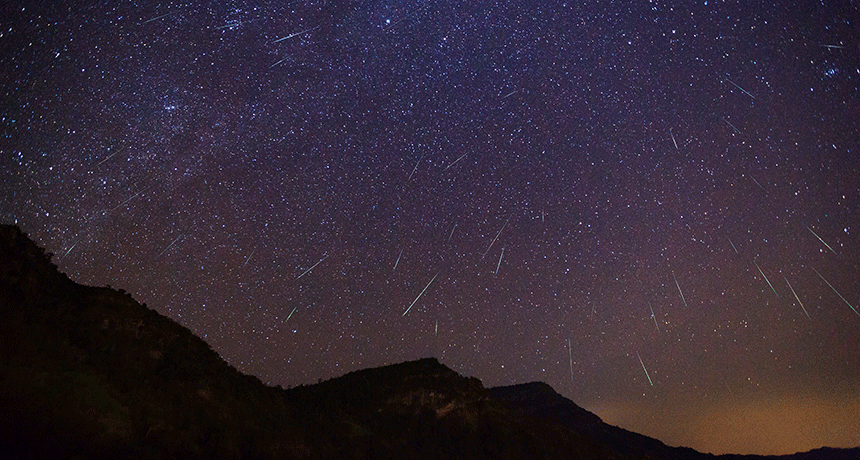Author: Matthew Cappucci / Source: Science News for Students

They’re called shooting stars. In fact, they’re only bits of space rock burning up in Earth’s atmosphere.
This month’s Geminid (JEM-in-id) meteor shower will briefly send streaks of light across the heavens after dark. The night of December 13 (into the 14th) should offer peak viewing. Up to 100 of these shooting stars will spark overhead every hour. But people are still likely to catch a few stragglers the day before and after.During some years, a bright, nearly full moon will outshine the fainter meteors. This year’s event occurs as the moon enters its first quarter phase. So its face will be only halfway illuminated during the show’s peak. That means plenty of meteors should be visible. Plus, the moon sets before midnight in the lower 48 U.S. states. That means the second half of the night should offer great viewing — if the weather cooperates.
This light show has a humble beginning. Most shooting stars actually are due to rock shards only the size of a rice grain. These interstellar bits are the leftovers of comets, asteroids and larger celestial bodies hurtling through space. Often, these objects leave behind trails of debris in their wake, like pebbles falling off a construction truck.
In the case of this week’s Geminid shower, the space pebbles shooting across the sky come from 3200 Phaethon. This asteroid is a rock 5.8 kilometers (3.6 miles) in diameter. That size was estimated in 2017 during an experiment led by NASA’s Jet Propulsion Laboratory in Pasadena, Calif. That parent rock is the source of all the tiny shards that light the sky on fire each mid-December.
The Geminids get their name because they appear to come from the constellation Gemini. If you traced back the paths of all Geminid meteors from Earth’s perspective, that is the part of the sky from which they appear to emerge. So Gemini is what’s called the radiant of this shower.

The Geminids tend to be the most dramatic and colorful meteor showers of the year. That’s because at roughly 125,000 kilometers (78,000 miles) per hour, they are relatively slow. Their sluggish speed means they last longer in the sky, making them relatively easy to spot. And they leave a brilliant trail that lasts three to four long seconds. In comparison, the Perseid (PER-see-id) showers each August…
The post Catch a ‘shooting star’ this month — and most others appeared first on FeedBox.